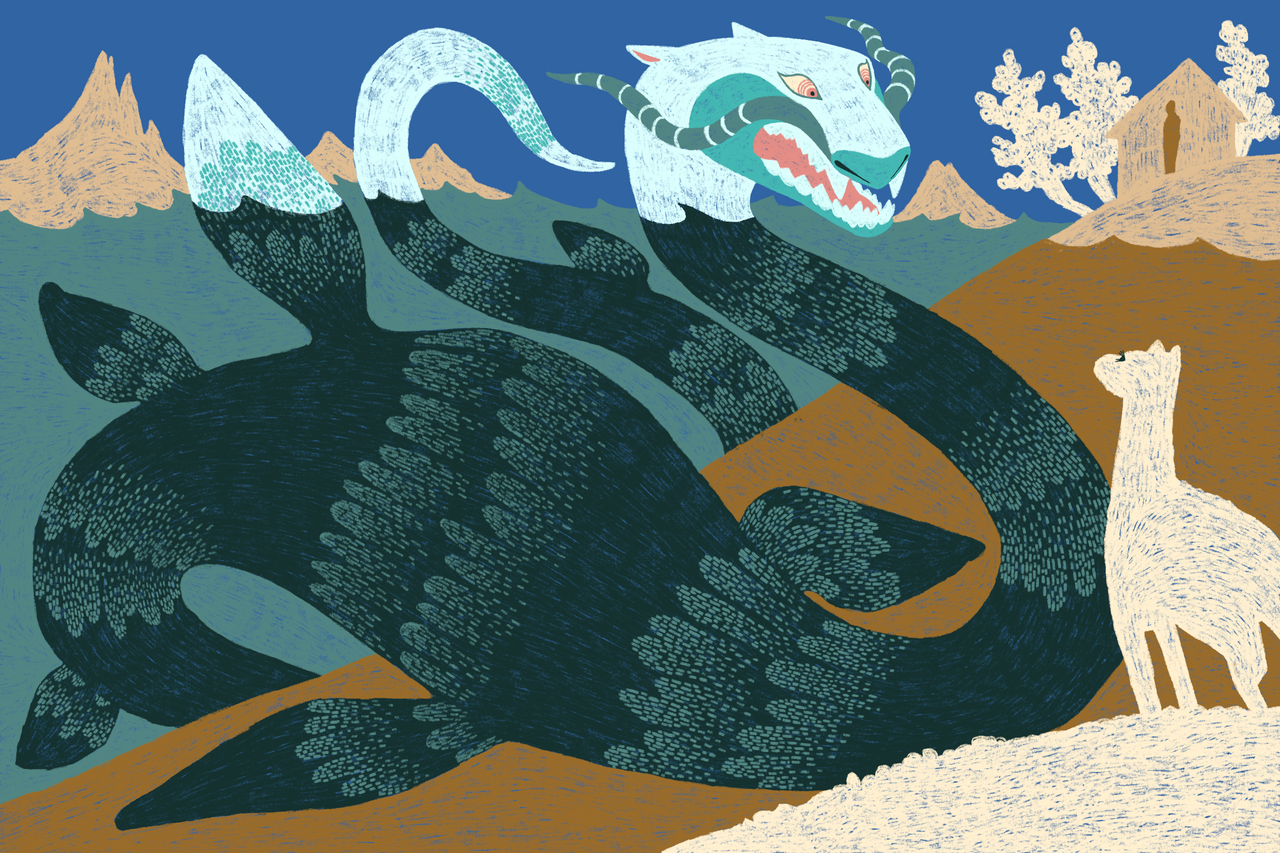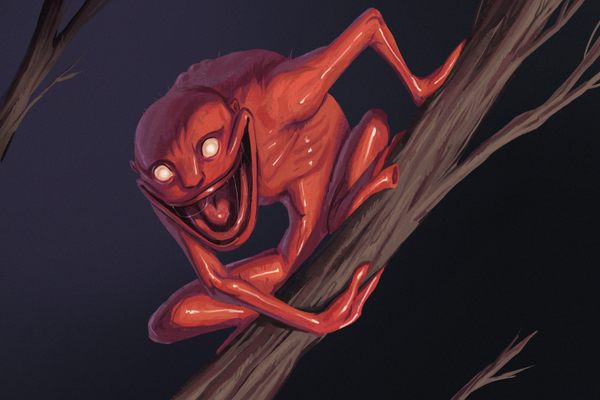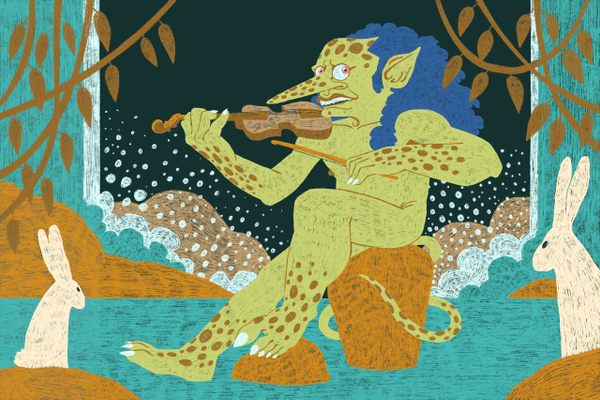Argentina’s Loch Ness Monster Lurks Beneath a Patagonia Lake
Nahuelito’s plesiosaur visage can be found all over the small town of Bariloche.
Deep in the mountains of Patagonia is a glistening, crystal-clear lake. People come here from all over the world to bask in the cool waters while gazing out at the stunning Argentinian landscape. But humans aren’t the only ones who swim in Nahuel Huapi Lake. Legend has it that a long-necked, plesiosaur-like monster roams these waters. Its name is Nahuelito.
The now-famous Argentinian cryptid has been spotted countless times from the banks of San Carlos de Bariloche (often shortened to Bariloche), a major point of entry for tourists to Patagonia. The small city, which is about the size of Topeka, Kansas, has embraced the Loch Ness monster lookalike. Bariloche-based filmmaker Miguel Ángel Rossi, director of Bajo Superficie, a documentary about the cryptid, says, “El Nahuelito is our most emblematic symbol.” For many Argentinians, just the mention of Nahuelito conjures images of Patagonia’s Andes Mountains towering above the region’s glistening rivers and lakes.
Nahuelito’s origins are, like the creature itself, shrouded in mystery. The Tehuelche people, who have lived in the Patagonia wilds for millennia, shared stories of a huge creature spotted swimming beneath the surface of Nahuel Huapi. Known as El Cuero to the Tehuelche, the monster was said to resemble a giant stingray with a sucker-like mouth that it used to eat its victims. Parents warned their children to stay away from the lakeshore or else El Cuero might drag them beneath the waves as a snack.

In the 16th century, early Portuguese sailors claimed they spotted other monsters roaming among Patagonia’s beech and cypress trees. They swore they saw “giant men” and named the region Pata-gão, or, in Portuguese, “big foot.” These early Europeans also caught glimpses of beasts swimming beneath the waves of the region’s many lakes—creatures like El Cuero and Nahuelito. For these explorers, Patagonia was a land of monsters.
Nineteenth-century immigrants to Patagonia added their own spin to the legendary creatures of the region. And in the 1920s, Nahuelito finally emerged in its modern iteration—as a long-necked, prehistoric monster.
American gold miner Martin Sheffield, who had settled in Patagonia in 1880, was among the first to describe Nahuelito. In 1922, he wrote to Buenos Aires Zoo director Clemente Onelli about a “long-neck, swan-headed creature” that dwelled in a lagoon near Epuyén, a village some 90 miles south of Bariloche. Onelli organized an expedition to Epuyén Lake, as well as to other major lakes in Patagonia, including Nahuel Huapi. At the time, the idea of uncovering a new, big species, like Edmund Hillary’s hunt for the yeti, was still taken seriously. Onelli and his team didn’t find the monster, but the publicity around the hunt forever cemented the creature in the public’s imagination.
One of Argentina’s leading newspapers, La Nación, quickly gave the creature form—as a giant plesiosaur. Other notable media outlets, such as Buenos Aires-based magazine Caras y Caretas and national newspapers La Razón and La Prensa, soon followed suit and featured long articles about Nahuelito with giant plesiosaur illustrations. A local Bariloche cigarette factory released “Plesiosaurio” packs. Tango musicians, such as the prolific composer Rafael D’Agostino, wrote “El Plesiosaurio.” International newspapers, such as The Toronto Globe, The New York Times, and France’s Le Petit Journal, all ran stories about Argentina’s mysterious cryptid.
Scrappy English paleontologist Mary Anning first discovered plesiosaurs in 1823. In the early 20th century, as interest in paleontology continued to grow, people began spotting prehistoric creatures that still roamed the Earth. In Scotland, the Loch Ness monster, or “Nessie,” started rearing its plesiosaur-shaped head. In the Republic of the Congo, a Brontosaurus-like creature known as Mokèlé-mbèmbé was spotted in Lake Tele. And across the globe in Argentina, Nahuelito, whose name derives from Nahuel Huapi Lake, morphed into a plesiosaur monster.

In 1923, Nahuelito became forever associated with the small, lakeside town of Bariloche. During that year’s Carnival, Italian immigrant and timber merchant Don Primo Capraro built a model of Nahuelito out of wood and burlap. For a small fee, children could ride on the monster’s back. Images of the event were soon published in La Nación.
Since then, Bariloche has been the undisputed home of Nahuelito. Today the city even has a park dedicated to its most famous inhabitant. “There is no place, no dinner, no mate [a caffeinated herbal Argentinian drink] get-together, where Nahuelito is not mentioned or where someone is not talking about a sighting,” filmmaker Rossi says. And if people are having mate with some delicious Nuestros Sabores chips, Nahuelito is right there on the chips’ packaging where the creature glides along Nahuel Huapi.
Rossi, who built his home on the shores of Nahuel Huapi, often finds himself looking for Nahuelito. Rossi has long been interested in the creature and its myth. After a screening of his documentary, he feels he might at last unearth the beast. “After the premiere, a myriad of people came up to me with experiences, pictures, and videos” of Nahuelito, he says. With all this new material, Rossi hopes to next produce a series about the monster. But Rossi, who has never seen the creature, will continue looking out across Nahuel Huapi in the hopes that one day he sees the long-necked silhouette of Nahuelito.


















Follow us on Twitter to get the latest on the world's hidden wonders.
Like us on Facebook to get the latest on the world's hidden wonders.
Follow us on Twitter Like us on Facebook